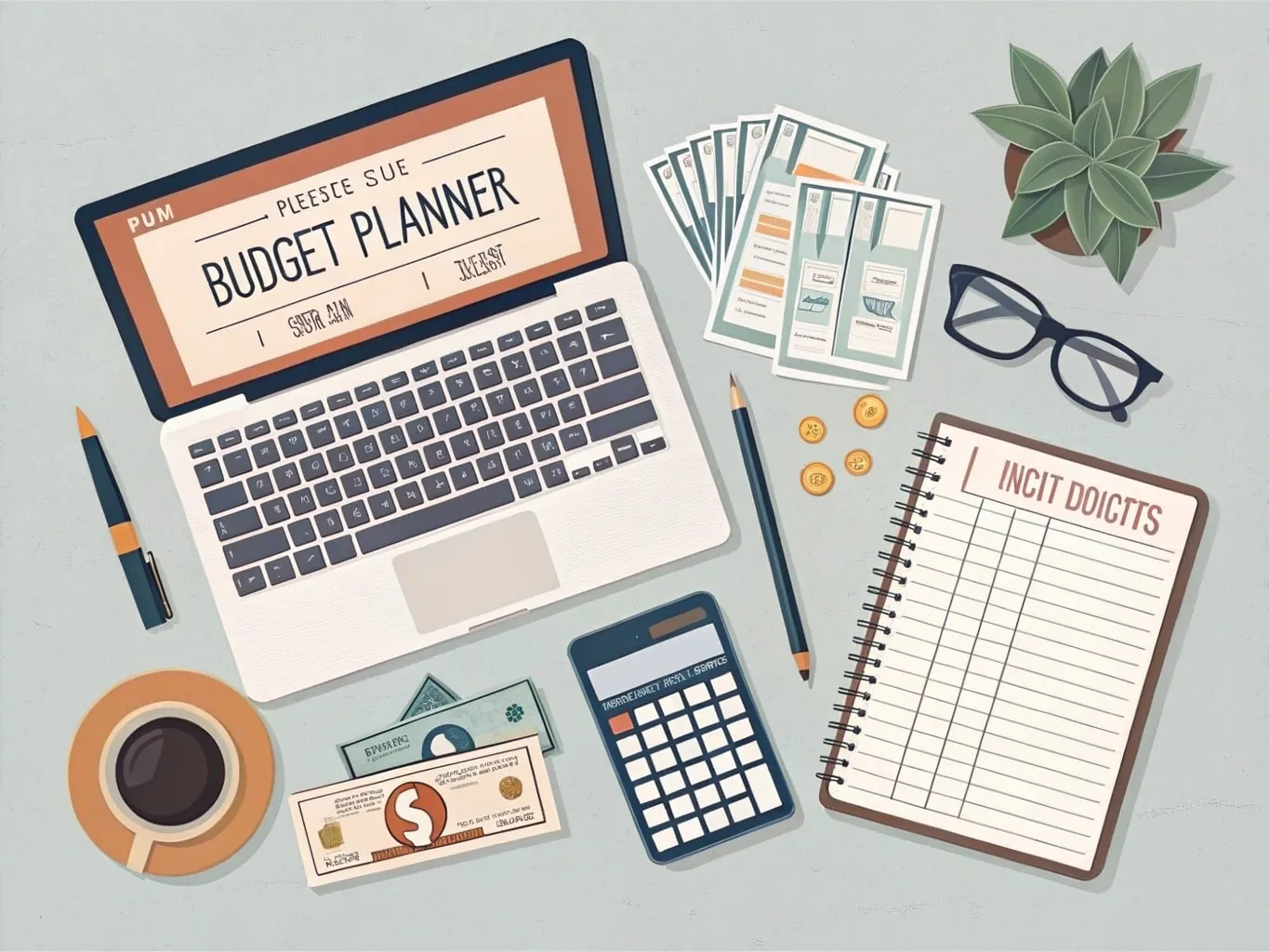12 Smart Frugal Living Tips to Stretch Your Budget

Managing money wisely has never been more important. With the rising cost of living, families and individuals are constantly looking for ways to make their income go further. That’s where frugal living comes in. Living frugally isn’t about denying yourself joy or comfort it’s about making smart, intentional choices that allow you to enjoy life while saving money. By being strategic with your spending and adopting practical habits, you can create financial stability, reduce stress, and even build wealth over time.
These 12 frugal living tips are explained in detail with practical advice, real-world examples, and smart savings strategies designed to help you stretch your budget and take charge of your financial future.
1. Understanding the Essence of Frugal Living
Frugal living is often misunderstood as being cheap or miserly, but in reality, it’s about value-driven spending. The goal isn’t to cut costs at the expense of your happiness but to focus your money on what truly matters to you. For example, a frugal person may skip buying designer clothes but will happily invest in high-quality shoes that last for years. It’s about prioritizing long-term value over short-term gratification.
The psychological side of frugality is also important. Studies show that people who practice mindful spending report higher satisfaction because they are in control of their money rather than feeling controlled by it. If you earn $3,000 a month but waste $500 on impulse buys, that’s $6,000 a year that could have gone toward savings, debt repayment, or even a family vacation.
Key Features of Frugal Living:
- Encourages mindful decision-making rather than impulsive buying.
- Builds financial discipline and resilience.
- Aligns spending with personal values and goals.

Savings Potential:
| Action | Potential Savings |
|---|---|
| Switching to a budget-friendly phone plan | $600–$1,200/year |
| Cutting cable and streaming instead | $480–$840/year |
| Avoiding impulse purchases | $1,000+/year |
2. Creating Your Money-Saving Command Center
Every successful frugal journey begins with a system for managing money. Think of it as your “command center” a place where you can see your income, expenses, savings, and debts all in one clear view. Without this, even the best money-saving tips will fail because you won’t know where your money is going.
Start by creating a monthly budget. The 50/30/20 rule is a great starting point: 50% of your income goes to needs (rent, bills, groceries), 30% to wants (dining out, entertainment), and 20% to savings or debt repayment. Use digital tools like Mint, PocketGuard, or YNAB (You Need a Budget) to track your expenses automatically.

One overlooked part of the command center is bill management. Many people pay $10–$50 extra each month on services they don’t use, like unused subscriptions or overpaid insurance policies. Negotiating bills with your internet or phone provider, canceling duplicate services, and setting reminders for due dates can easily save $500–$1,000 annually.
Pro Hack: Call your utility or internet providers once a year and ask for discounts. Most companies would rather lower your bill slightly than lose you as a customer.
3. Essential Frugal Tips for Everyday Life
Frugality isn’t just about big financial decisions it’s the daily habits that add up. Making your own coffee instead of buying it, bringing lunch to work, or opting for water instead of sodas are simple swaps that create big savings.
Take food costs as an example. Eating out for lunch five days a week can cost $50–$75, while packing your own lunch may cost only $15–$20. That’s an annual savings of over $2,000. Similarly, cooking at home instead of ordering takeout can cut monthly food expenses in half.
Daily frugal habits also improve health. Drinking water instead of sugary drinks not only saves money but also reduces calorie intake, potentially lowering future healthcare costs.
Estimated Annual Savings from Simple Habits:
| Habit | Savings |
|---|---|
| Pack lunch instead of eating out | $2,000 |
| Cut cable, stream instead | $700 |
| Drink water instead of soda | $400–$600 |
4. Mastering the Art of Strategic Shopping
Smart shopping is at the heart of frugal living. Instead of cutting out shopping altogether, learn to maximize value. This means comparing prices, waiting for sales, using coupons, and buying secondhand when possible.
Impulse shopping is one of the biggest budget killers. The 30-day rule is a great technique before making a non-essential purchase, wait 30 days. If you still want the item after that time, buy it. This cuts down on wasteful purchases and ensures you buy things you truly value.
Switching to store-brand products instead of name brands can save up to 25% per shopping trip. Meal planning also prevents unnecessary grocery runs and food waste, saving the average household $200–$400 annually.
Smart Shopping Hacks and Savings:
| Strategy | Savings Potential |
|---|---|
| Use cashback/rewards apps | 2–10% per purchase |
| Switch to store brands | Up to 25% |
| Meal planning | $200–$400/year |
| Buy secondhand | 50%+ vs. new |
5. Implementing a No-Spend Month Challenge
If you feel like your spending is out of control, a no-spend month can help reset your financial habits. During this challenge, you spend money only on essentials like groceries, rent, and utilities while cutting out non-essentials like dining out, entertainment, and shopping.
The average participant saves between $100 and $500 in one month. But more importantly, the challenge builds discipline and reveals unnecessary expenses. Many people realize they can live without certain “luxuries” they thought were essential.
For success, plan ahead by meal prepping, stocking up on essentials before the month begins, and finding free activities for entertainment. A no-spend challenge isn’t about punishment—it’s about breaking bad spending habits and reclaiming control.
6. Mastering the Skill of Meal Planning and Cooking at Home
Food is one of the biggest areas where money leaks away unnoticed. A family that eats out or orders food delivery three times a week could easily be spending an extra $3,000–$5,000 per year. Meal planning is one of the most powerful frugal habits you can adopt, not just for your wallet but for your health too.

Start by planning weekly meals around sales and seasonal produce. Apps like Mealime or Paprika can help organize grocery lists, while local store flyers highlight weekly discounts. Cooking in batches—like preparing soups, pasta sauces, or casseroles saves both time and money, as leftovers become quick lunches or dinners.
Another overlooked trick is “use it up cooking.” Instead of letting half a bag of spinach or an extra tomato go bad, plan a meal around them. In the U.S., the average family wastes about $1,600 worth of food annually. That’s like throwing away money with every spoiled item.
Quick Example of a Frugal Weekly Meal Plan:
| Day | Dinner |
|---|---|
| Monday | Spaghetti with homemade tomato sauce |
| Tuesday | Stir-fry with rice & leftover veggies |
| Wednesday | Lentil soup + bread |
| Thursday | Chicken drumsticks with roasted potatoes |
| Friday | Homemade pizza night |
| Saturday | Vegetable curry with naan |
| Sunday | Roast chicken with sides → leftovers for sandwiches |
Savings Potential: $200–$400/month, plus better nutrition.
7. Embracing DIY and Repair Instead of Replacing
In today’s convenience culture, the default response to a broken item is to replace it. But with a little effort, many items can be repaired at a fraction of the replacement cost. Learning simple DIY skills can save thousands over the years.
For instance, sewing a button back on a shirt saves you $20–$40 from buying new. Replacing a phone screen protector costs $10, compared to $200 for a cracked screen repair later. YouTube tutorials make learning repairs easier than ever, whether it’s fixing a leaky faucet, painting a room, or changing your car’s oil.
Additionally, DIY doesn’t just apply to repairs it extends to home décor, cleaning products, and even gifts. A homemade gift basket can cost $10 to make but would retail for $50 or more in stores.
Common DIY Fixes and Their Savings:
| Item | DIY Cost | Replacement Cost | Savings |
|---|---|---|---|
| Clothing button repair | $0.50 | $20–$40 | $19+ |
| Leaky faucet fix | $10 | $150+ | $140+ |
| Homemade cleaning spray | $2 | $10–$15 | $8–$13 |
Frugality here is about empowerment you gain skills while saving money.
8. Leveraging Technology to Save Automatically
Living frugally doesn’t mean living manually. Today’s technology offers dozens of apps and tools that automate saving and stretch your budget.
Cashback apps like Rakuten, Honey, or Ibotta can return 2–10% of your spending without extra effort. Bill negotiation services like Trim or Truebill automatically cancel unused subscriptions and renegotiate utility bills. Banking apps like Chime and Ally round up every purchase and save the spare change into your savings account.

What’s powerful about automation is that it removes the need for constant discipline. Instead of manually remembering to transfer $50 into savings, your app does it for you. Over a year, these micro-savings can add up to hundreds or even thousands.
Example: If you spend $1,000/month on essentials and use a 5% cashback app, you’re saving $50/month or $600/year effortlessly. Combine this with automated savings of $25/week ($1,300/year), and you’re suddenly building wealth just by setting systems in place.
9. Reducing Energy and Utility Bills
Utility bills are often overlooked because they feel “fixed,” but with intentional frugal habits, you can lower them significantly.
Start with electricity: switching to LED bulbs can reduce lighting costs by up to 80%. Unplugging unused electronics, known as “phantom power,” saves $100–$200 annually. Setting your thermostat just 2–3 degrees lower in winter or higher in summer can shave 10% off heating and cooling costs.
Water bills can also be reduced with simple actions like installing low-flow showerheads, fixing leaky faucets, and running dishwashers only when full. For families, this can mean $300–$600 in savings yearly.
Utility-Saving Hacks:
- Use smart power strips to cut phantom energy use.
- Wash clothes in cold water (saves $60–$100/year).
- Air-dry laundry instead of using the dryer.
- Take shorter showers cutting 5 minutes saves thousands of gallons yearly.
Estimated Savings: $500–$1,000 annually with small lifestyle tweaks.
10. Smart Transportation Choices
Transportation costs fuel, car maintenance, insurance are the second largest household expense after housing. Frugal living means rethinking how you move around.
For shorter distances, consider biking or walking, which saves fuel and also improves health. Public transport, carpooling, or ride-sharing apps reduce costs compared to driving solo. If you own a car, regular maintenance like oil changes and tire rotations extends its life, preventing costly repairs.
For those living in cities, downsizing from two cars to one, or even going car-free, can save thousands annually. AAA estimates that owning a new car costs about $10,000 per year including depreciation. Even reducing usage can free up significant cash for savings or investments.
Frugal Tip: Consider pay-per-mile insurance if you drive infrequently it can cut premiums by 30–50%.
11. Building a Minimalist Mindset
Minimalism and frugality often go hand in hand. A minimalist mindset isn’t about living with as little as possible it’s about owning only what adds value to your life.
Every unused gadget, extra clothing item, or duplicate kitchen appliance represents money that could have been saved. By embracing minimalism, you not only reduce spending but also create a clutter-free, stress-free living environment.
For example, instead of having 15 different mugs, keep the 4 you use regularly and donate the rest. Instead of chasing the latest smartphone each year, keep your current one until it truly needs replacing. This mindset saves thousands over time while fostering gratitude for what you already own.
Psychological Benefit: People who practice minimalism report higher levels of happiness because they focus on experiences over possessions.
12. Setting Long-Term Frugal Goals for Financial Freedom
Frugal living isn’t about small, temporary sacrifices it’s a long-term lifestyle that can lead to financial freedom. The money you save should be given a purpose: building an emergency fund, paying off debt, or investing for retirement.
For instance, saving just $300/month and investing it with an average 7% return could grow to over $370,000 in 30 years. That’s the power of consistent, frugal habits compounded over time.
Set clear goals:
- Short-term → Build a $1,000 emergency fund.
- Mid-term → Pay off high-interest debt.
- Long-term → Save 15–20% of income for retirement.
The beauty of frugality is that it doesn’t just save money today it transforms your financial future.
Conclusion
Frugal living is not about deprivation it’s about living smarter, not harder. By applying these 12 smart frugal living tips, you can take control of your finances, reduce financial stress, and stretch your budget further than ever before. Whether it’s meal planning, DIY repairs, or leveraging technology, every habit compounds into meaningful savings. Over time, these savings not only help you survive tough times but also build the foundation for financial freedom.
(FAQs)
1. What does frugal living really mean?
Frugal living isn’t about being cheap it’s about being intentional with money. It means focusing spending on things that truly matter, avoiding waste, and maximizing value in every purchase.
2. Can frugal living help me get out of debt?
Yes. By cutting unnecessary expenses and redirecting savings toward debt payments, you can pay down high-interest loans faster. For example, saving $300/month through frugal habits can help clear $3,600 in debt per year.
3. Is frugal living possible with a family?
Absolutely. Families can save significantly by meal planning, buying in bulk, reusing items, and teaching kids to value experiences over material things. Frugal living often brings families closer by focusing on shared goals.
4. Do I need to give up luxuries to live frugally?
Not necessarily. Frugal living is about prioritization. You can still enjoy luxuries, but you’ll likely be more selective choosing a vacation once a year instead of eating out weekly, for example.
5. How much money can I save by living frugally?
Savings vary depending on lifestyle, but many people cut 20–30% of their expenses. That could mean an extra $5,000–$10,000 a year for savings, debt repayment, or investments.
6. Is frugal living sustainable long-term?
Yes. Unlike extreme budgeting, frugality is flexible and practical. It’s about building smart habits—like cooking at home or reducing waste—that easily fit into daily life and grow with you over time.
7. Can frugal living help me invest more money?
Definitely. Every dollar you save can be invested for long-term growth. Even small, consistent investments (like $100/month) can compound into tens of thousands of dollars over time.
8. Is frugal living the same as minimalism?
Not exactly, but they complement each other. Frugality focuses on money management, while minimalism focuses on reducing clutter. Together, they create a more intentional, stress-free lifestyle.






